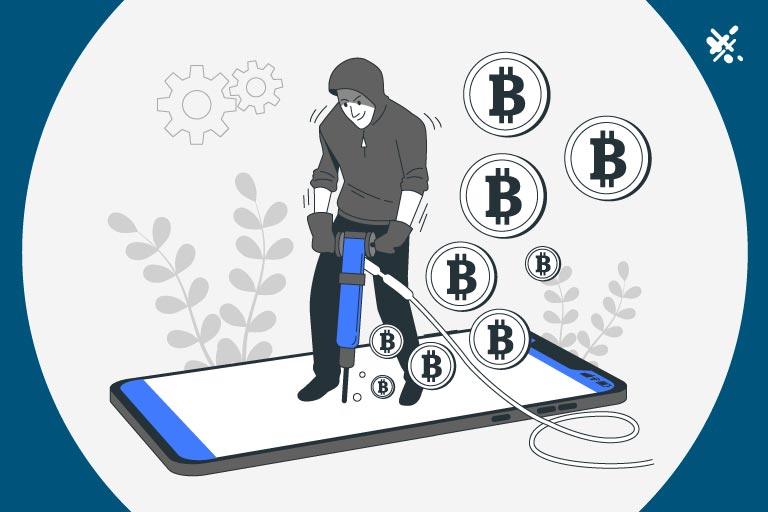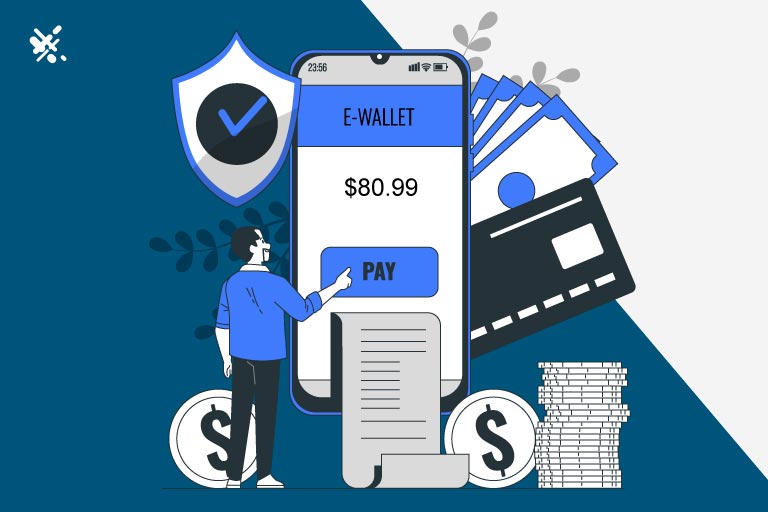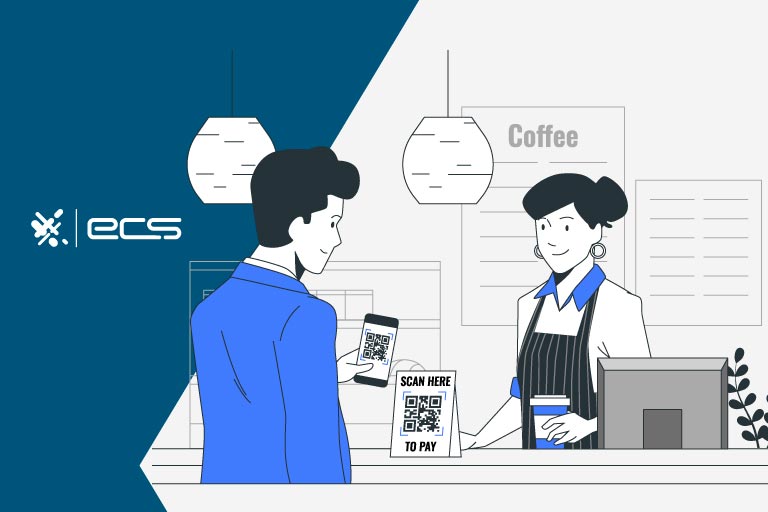Cashless payments is a catchall term that includes many payment types…just not cash. So, what does cashless mean? A cashless payment system includes those that accept debit cards, credit cards, ACH deposits, cryptocurrency, and even checks. Cashless payment solutions can include anything used to facilitate a transaction aside from paper currency or coins.
Around 44% of consumers prefer paying for purchases with their debit cards, 32% prefer credit cards, and only 19% like using cash. However, Consumers still do use cash.
Research shows that of 12 purchases under $25 that consumers make each month (which seems like a low estimate for anyone who goes to Starbucks daily), around 25% of them are paid for in cash. But the upshot of these findings is that the other 75% of these incidental purchases are made with a card.
How to Implement Cashless Payments in Your Business
There is only one way to accept the variety of cashless payment options out there. And that is to work with a payment processor to accept cards, ACH, and other forms of electronic payment. The infrastructure for accepting payments from customers tendering cards (and similar forms of payment) is not really set up for anything else.
Payment processors help you connect to the card networks (Visa, Mastercard, American Express, and Discover). Which in turn facilitates the connection between bank accounts—the customer’s issuing bank, and your (merchant) acquiring bank. Payment processors provide and service the software that animates the hardware of a cashless card system.
These point-of-sale terminals or POS terminals are devices that allow customers to use their credit or debit cards to complete a sale. Some POS terminals also allow customers to use mobile wallets—that is, card information stored on their phones. And some POS terminals also allow customers to offer cryptocurrency as payment.
If your business is going to have an online store, you will need a payment processor. Customers can’t pay with cash on the Internet, and you cannot rely on them to send money your way. You need to accept credit, debit, ACH, and perhaps crypto payments before releasing goods or access to services to the customer.
Types of Cashless Payments
As you might have already gleaned, there is more than one way to pay without cash. Ultimately, all of these ways will involve pulling money out of the customer’s account and depositing it in yours. But the method of initiating that transition at the point of sale differs. Here are a few of the most popular cashless payment methods.
Debit Card Payments
When a customer uses a debit card to make a purchase, the payment is deducted from their bank account right away. In that sense, debit cards are closer to cash and check as a form of payment. But with the added convenience that the customer does not have to carry cash or check on their person.
Credit Card Payments
Credit cards are not linked to a customer’s bank account, even if the same bank manages both financial products. They have a credit line that allows the customer to borrow from the bank that issued it- up to their limit. As they pay off the outstanding balance, they free up more borrowing power.
Mobile Wallets
Mobile wallets are digital wallets that consumers store on their phones. To make payments, the consumer will use their phone like a contactless credit card at the point of sale. There are already almost 3 billion mobile wallet users around the world. And there will be an estimated 5 billion mobile wallet users by the end of 2024.
Most consumers spend at least 3 hours and 15 minutes on their phone every day. And the average phone user has about 6.6 different social media accounts. All this phone usage increases consumer sentiment that mobile payments are far more convenient than carrying around a leather bifold in their pocket.
Contactless Payments
Contactless payments are cashless, but not all cashless payments are contactless. For example, plastic card payments that involve swiping a card’s magnetic strip through a card reader, or inserting an EMV chip into the POS, are not contactless payments–because the customer is still making contact with their card.
Microchips inside the plastic card or smartphone generate one-off pieces of encrypted information that are sent to the POS terminal to complete the transaction. The effective radius of these NFC “conversations” is just a few inches, making them secure from outside interference. And the information is also ultimately useless for criminals to collect because each payment has a different signature.
In any case, contactless payments are the way of the future. The Covid Pandemic and its health-related concerns accelerated the use of contactless payments by 150%. At this time, almost 70% of United States merchants already take contactless payments and plan on keeping them for good as a payment method.
Contactless payments are secure through NFC communication, encryption, and tokenization (the aforementioned generation of one-time codes). They also take the least amount of time to complete, adding convenience to their list of benefits.
ACH Payments
The Automated Clearing House is a network of banks and other institutions that can send money directly from one account to another. ACH operators manually send electronic payments from one institution to another, using bank account numbers and routing numbers. As such, these payments avoid card networks entirely, and their fees.
However, you will still need a payment processor to collect ACH payments from customers. That’s because consumer bank accounts are not often set up to facilitate ACH payments. Your merchant bank may offer this service. But often, the fees may be higher, and it may be more cumbersome to set up with a customer.
By contrast, a payment processor can facilitate the collection of recurring ACH payments with a streamlined form that is integrated into your website or can even be set up at the point of sale. ACH payments are especially good for recurring payments, such as a subscription service. While this might include membership access to online content or the regular delivery of boxed products, ACH payments can also facilitate monthly variable bills based on usage, and rent.

Cryptocurrency Payments
Cryptocurrency is one of the more baffling payment modalities these days. But it bears explanation because businesses are starting to accept it. In a broad overview, cryptocurrencies are digital coins that are not managed by a central bank or backed by a government. They’re international, they’re anonymous, and they have cool names like PotCoin and Coinye (West).
While it seems silly, crypto has actually become a valid form of payment. Crypto’s appeal is its decentralization and the anonymity afforded to crypto holders. Unfortunately, crypto is also mostly unregulated and there are thousands of different currencies. You will need the right POS hardware and software to accept crypto payments, securely.
Microsoft, PayPal, Home Depot, Starbucks, Etsy, and Whole Foods are just a few of the companies now accepting crypto payments. And there are third-party software integrations that are also now facilitating crypto payments. Even to companies that don’t usually take crypto.
In terms of your business, the primary crypto frontier would be online. But in-store crypto payments are happening (both by card, like the one offered by Coinbase) and by mobile wallet. And they will likely see an increase in usage over the next decade.
Buy Now and Pay Later
BNPL differs from credit card payments, which are also essentially forms of buy now, pay later. BNPL applications are also called point-of-sale loans. They allow the customer to make their payment in installments, instead of paying all at once.
If your payment processor facilitates this type of cashless payment, you will get the entirety of the money owed to you in a day or so, fronted by the payment processor or their lending partner. Then the customer will owe their payments to that lender in the form of a payment plan.
Companies like Affirm, Kabbage, and Afterpay have made significant inroads with consumers online. Partnering with the likes of Amazon, Walmart, and many other retailers they provide consumers with payment plans. But for small or midsize businesses, a payment processor who is contracted to help cashless businesses accept cards may also provide POS loan solutions such as ECS.

Pros and Cons of Cashless Payment
Everything in life has its pros and cons, and the cashless system is one of them.
Pro: Consumers Spend More with Cards
Studies have shown that some consumers are spending as much as 160% more with cards than they would with cash. Similar studies have shown the average cash transaction to be around $22, while card transactions are $112. However you slice it, people spend more with cards, and that means more revenue for you.
Con: Cashless Payments Can Be Mined For Data
Once cash is handed over, there is no way to trace it, other than fingerprinting…which probably wouldn’t go far, since cash tends to have lots of fingerprints. Card transactions (and other cashless payments) by contrast can be integrated with analytic software.
This type of resource management software can help keep track of inventory, making ordering and restocking more efficient. It can help you see what’s selling, and what’s not, which in turn can help with store layouts or promotions. It can also give you insights into customer behavior and shopping preferences. Which you can use at a large scale, or even a more individual, nuanced scale with tailored product recommendations.
Pro: Cashless Payments Lead to Faster Checkouts
Cashless payment with contactless devices is incredibly rapid–taking just a few seconds. Much faster than a customer taking out their wallet, handing over cash, and receiving change. And definitely much faster than those people who bring coins to the counter and start counting out exact change. Cashless payments in general are quick and easy. But chip insertions and magnetic swipes do take longer than hovering the card or phone over the POS.
Con: Cashless Payment Technology Has a Learning Curve
Installing and servicing POS hardware can cost up to $2,500 upfront. Plus an additional $1,000 annually after that, and that’s just for one register. Then there are cashless payment apps like Square. These companies will sell or lease you low-quality hardware, but good luck getting them on the phone if you ever need help.
The easy solution to this problem is to work with a cashless payment company that can create a specific partnership with you and your business. One that offers you the hardware and software you need. They will sell or lease you the devices and the software needed to run transactions. Plus they will be available to help with any problems that come up.
Cashless Payment Fees
There are no fees for accepting cash payments…other than taxes, of course. By contrast, there is a fee for taking card payments. This merchant discount rate is charged by your payment processor and includes interchange fees and assessment fees from the card network and your acquiring bank, plus some markup to compensate the payment processor.
However, not all payment processors have the same fees and rates, and not all cards have the same fees and rates. Looking at some of the payment structures offered by large payment aggregators like PayPal and Square can make it seem like accepting cards is not worth it.
Just remember that most payment processors will not publicize the same fees as a one-size-fits-none arrangement. They will work with you to create a fee structure that satisfies both parties, based on your sales volume, transaction size, and other factors about your business, rather than offering a monolithic payment scheme.
Another thing to keep in mind is that (as mentioned) consumers spend more with cards and tend to carry cash far less often. If you were to stop accepting credit and debit cards because of the 2% (or thereabouts) cost of running a transaction, you’d be losing a lot of business. Moreover, paying $2 on a $100 transaction is better than paying nothing on a $20 transaction (in reference to consumer spending habits cited above).
Can You Accept Cashless Payments if the Power Goes Out?
So what if there is a power outage? It may be a true and valid reason to still accept cash. However, I am happy to inform you there are multiple options available for cashless payments even during a power outage.
First, some terminals can accept payment offline. When a customer provides their card information, it is stored in a queue and then sent to the payment processor once the terminal is connected online again. And if the power goes out, you also have the option to run your transactions via phone connectivity via 4G, 5G, or LTE if you’ve set your terminal up to do so.
Additionally, another cashless solution, one we have not yet explored, is the QR code. QR codes are checkerboard patterns that customers can scan with their phone cameras, which will then take them to a payment gateway.
They can input their card information in the payment gateway to complete their transaction. Just know that these types of transactions are routed as card-not-present transactions, even if the customer is in front of you, and these types of transactions have higher fees.

Ready to Implement Cashless Payments Into Your Business?
You have seen the future, and it is cashless. However, you can only arrive at that cashless future if you have the help of a payment processor, who can assist in taking credit, debit, ACH, and perhaps even crypto payments. Of course, taking payments online will also need to be facilitated by a payment processor who can integrate with your website.
If you’d like to learn more about how cashless payments can increase your sales volume and ticket size, give us a call, or use our contact us form. We’d be happy to explore the best cashless payment options for your business, including POS systems, software, and other cashless solutions.
To contact sales, click HERE. And to learn more about ECS Cashless Payments visit Credit & Debit.
